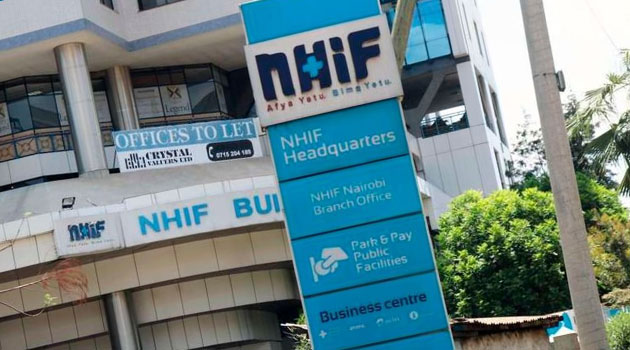
Audit exposes Sh2.3bn excess remittance to NHIF by MoE’s EduAfya » Capital News
NAIROBI, Kenya, July 16 – A special audit of the Ministry of Education’s EduAfya programme has revealed Sh2.29 billion in excess remittances to the defunct National Health Insurance Fund (NHIF).
The excess payment is part of glaring financial inconsistencies, including questionable utilization of capitation funds in hundreds of public secondary schools, reported by the Auditor General.
The audit, authorized by the National Assembly Public Accounts Committee chaired by Butere MP Tindi Mwale, reviewed the programme’s operations between the 2020/2021 and 2023/2024 financial years, flagging serious weaknesses in how funds were disbursed and utilized.
Launched in 2018 under President Uhuru Kenyatta, EduAfya was intended to provide comprehensive medical insurance to students in public secondary schools across the country.
According to the audit, the total insurance premiums payable during the reviewed period were Sh14.17 billion, yet the actual remittances made to NHIF amounted to Sh16.47 billion—an excess of Sh2.29 billion with no documented justification.
Out of 9,312 secondary schools whose student capitation was deducted and remitted to NHIF, only 8,846 schools had students who accessed medical services during the audit period.
For the remaining 466 schools, which remitted a combined Sh273.75 million, there was no evidence—either in NHIF records or on the Ministry’s digital platform NEMIS (National Education Management Information System)—that students accessed any medical facility.
While NHIF received a total of Sh16.47 billion, the cost of medical services recorded in NEMIS was only Sh5.39 billion, leaving an unexplained gap of over Sh11 billion.
“There was no assurance that the value of services rendered to learners under the EduAfya scheme was commensurate with the total amount remitted,” the report stated.
Contract violations
The audit also found that student visits to medical facilities continued beyond the contract period.
Although the EduAfya contract was set to lapse on December 31, 2023, sixty-five student visits were recorded up to February 28, 2024, with the post-contract services valued at Sh35,550.
Additionally, auditors found that 4,100 primary and Junior Secondary Schools (JSS) accessed EduAfya services despite not appearing in the official NEMIS capitation records.
These schools consumed medical services worth Sh40.16 million, raising accountability concerns.
The report highlighted systemic weaknesses in both financial oversight and data management within the EduAfya programme.
“The disbursement of premiums and the number of students accessing services under the EduAfya scheme lacked alignment,” the report noted.
The EduAfya scheme was a joint initiative by the Ministries of Health and Education and the NHIF, launched in May 2018.
It was renewed annually for five years, with the government paying a premium of Sh1,350 per student per year.
Under the scheme, students were covered for outpatient, inpatient, and emergency care, as well as dental and optical services.
It also helped in diagnosing previously undetected chronic conditions that often kept students out of school.
However, in December 2023, NHIF terminated the Sh4.5 billion EduAfya scheme, as President William Ruto’s Administration shifted focus to universal healthcare access under the Social Health Insurance Fund (SHIF).